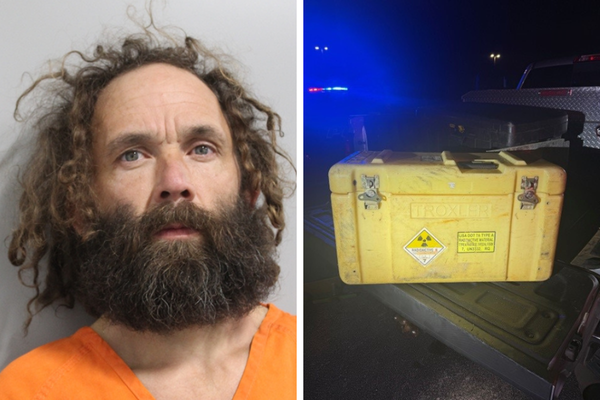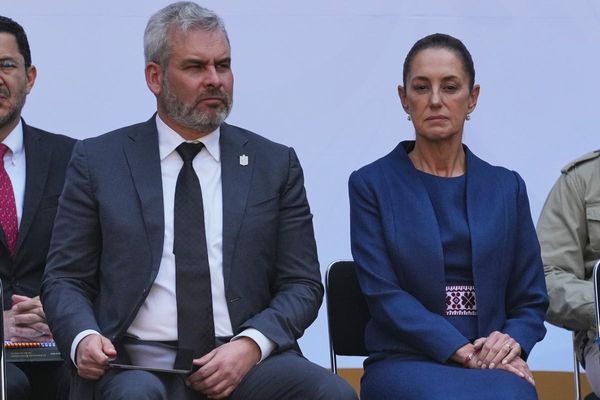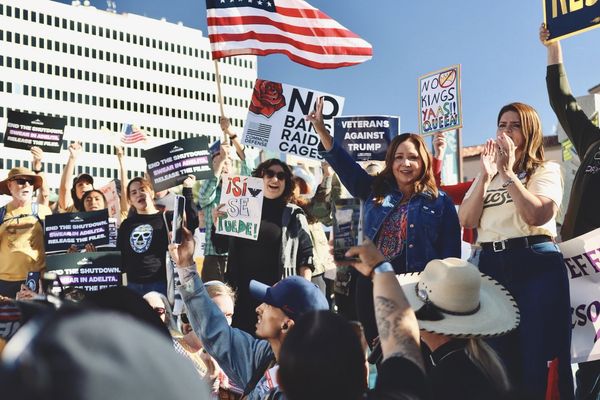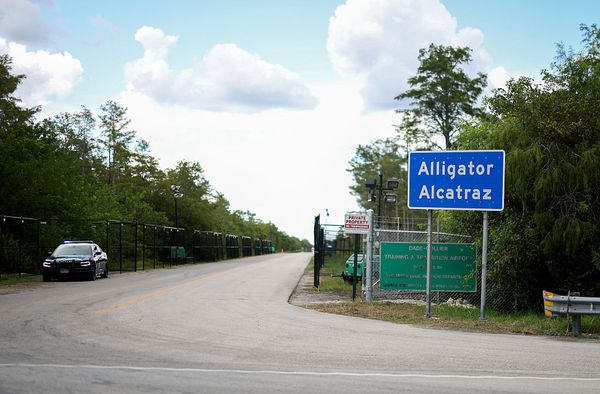The recent opening of an immigration centre in El Paso, Texas, has reignited protests of the Trump administration’s tough immigration plans from Japanese Americans. The internment camp, which opened in August 2025, is on the site of a military base that was used to intern Japanese Americans during the war.
In the past few months hundreds of Japanese Americans have been protesting the construction of new immigration centres and plans to detain thousands of people by the US Immigration and Customs Enforcement unit (Ice), because it stirs up memories of how their families were rounded up during the second world war.
The US government has also invoked the 1798 Alien and Enemies Act, last used in the second world war, to increase the powers of Ice to detain individuals.
Much of the basis for the internment of Japanese Americans during the war was derived from the 1798 act, which allows the detention and deportation of foreign “enemies”.
Dublin prison, near San Francisco, was closed in 2024 but Ice is seeking to reopen it – and many other detention sites – to keep up with Donald Trump’s ambitious plan to arrest large numbers of immigrants.
The Japanese American community came out to protest in July around Dublin, outlining fears that the recent Ice raids are a repeat of the history that led to the incarceration of more than 120,000 Japanese Americans between 1942 and 1946. One internal Ice estimate suggests there are currently 60,000 immigrants held in detention throughout the US.
Latino neighbourhoods are being targeted, according to civil rights groups, although the Department of Homeland Security has denied it is targeting groups based on their skin colour or ethnicity.
One protester, Lynn Yamashita, said to ABC News: “I’m here because the Japanese were interned, my father was interned, and it can’t happen again – but it is happening, it’s shameful.” Douglas Yoshida, another protester, said: “There’s no invasion, but Trump has cited the Alien Enemies Act to detain and deport people without any due process.”
The Japanese American community in California has been quick to draw comparisons between the alleged targeting of Latino communities by Ice and their own treatment during the second world war. This attracted particular national attention when scores of masked and armed federal agents turned up and arrested a person outside the Japanese American National Museum (JANM) in Los Angeles, during a speech by California’s governor, Gavin Newsom.
This is a highly symbolic site, as it is where Japanese American families were forced to board buses to American concentration camps in 1942. JANM has posted pictures comparing the cramped conditions in those WWII camps to the cages being used in Ice detention facilities. In both cases, families were ripped apart, causing huge amounts of trauma.
What is the history?
In the decades before the second world war, various pieces of legislation were passed to halt both Chinese and Japanese immigration to the US, and there was significant racism directed at Asian immigrants.
Many businesses run by white Americans refused to serve Asians or let them use leisure facilities such as swimming pools. They were also reluctant to allow anyone who looked Asian to rent or buy properties in white neighbourhoods. Despite these challenges, Asian immigrants worked hard to establish businesses and farms, as well as working in many American factories.
Today, immigrants from the Latino and Hispanic populations make up around 19% of the American workforce, yet regularly experience racism in the US.
Forcibly displaced and incarcerated
During the second world war, with the US and Japan on opposite sides, people of Japanese ancestry living in the US were forcibly displaced and incarcerated. The basis of their treatment was signed into being as executive order 9066 by President Franklin D. Roosevelt in February 1942.
EO9066 authorised the forced removal of any person who might be a threat to national security from the west coast of the US. Although no mention was made of any specific group, the order was used almost exclusively to target individuals of Japanese ancestry – not just Japanese citizens but their US-born children.
Much of the argument for detention both then and now is to rid the country of “undesirables” – be they defined as “looking like the enemy” (then) or “violent criminals or illegal immigrants” (now). However, recent data shows large numbers of arrests are being made of people without criminal charges or convictions, and of some US citizens. This suggests Ice is very focused on meeting its alleged quota of arresting 3,000 migrants per day. The White House has denied this quota exists.
Since Trump’s return to office, some people have reportedly been arrested during routine naturalisation appointments for errors as small as forgetting to submit a relevant form. Even when someone has entered the US legally, this is not necessarily protection from the new powers enacted under the Trump presidency.
Hundreds are being detained in hastily constructed detention camps in isolated areas. During the second world war, this was what happened with the ten so-called “relocation centres”, or internment camps, that were built across the west and south of the US for Japanese Americans, who were then denied habeas corpus – meaning they had no right to defend themselves in a court of law and could be detained indefinitely without a fair hearing.
In June this year, there were suggestions from the Trump administration that it was discussing suspending habeas corpus. If this happens, it could mean there is no limit for how long people can be detained in these camps, and that they no longer have a right to a fair hearing.
In 1988, the US accepted it had carried out a “grave injustice” against people of Japanese ancestry, and that these actions during the second world war were motivated by racial prejudice and “war hysteria”. It’s not clear what, if any, lessons have been learned from this history – and if so, why are they being ignored?
Rachel Pistol has received funding from the British Association for American Studies with the Tuna Canyon Detention Station Coalition for a travelling exhibition in 2026 about Japanese American incarceration.
This article was originally published on The Conversation. Read the original article.







